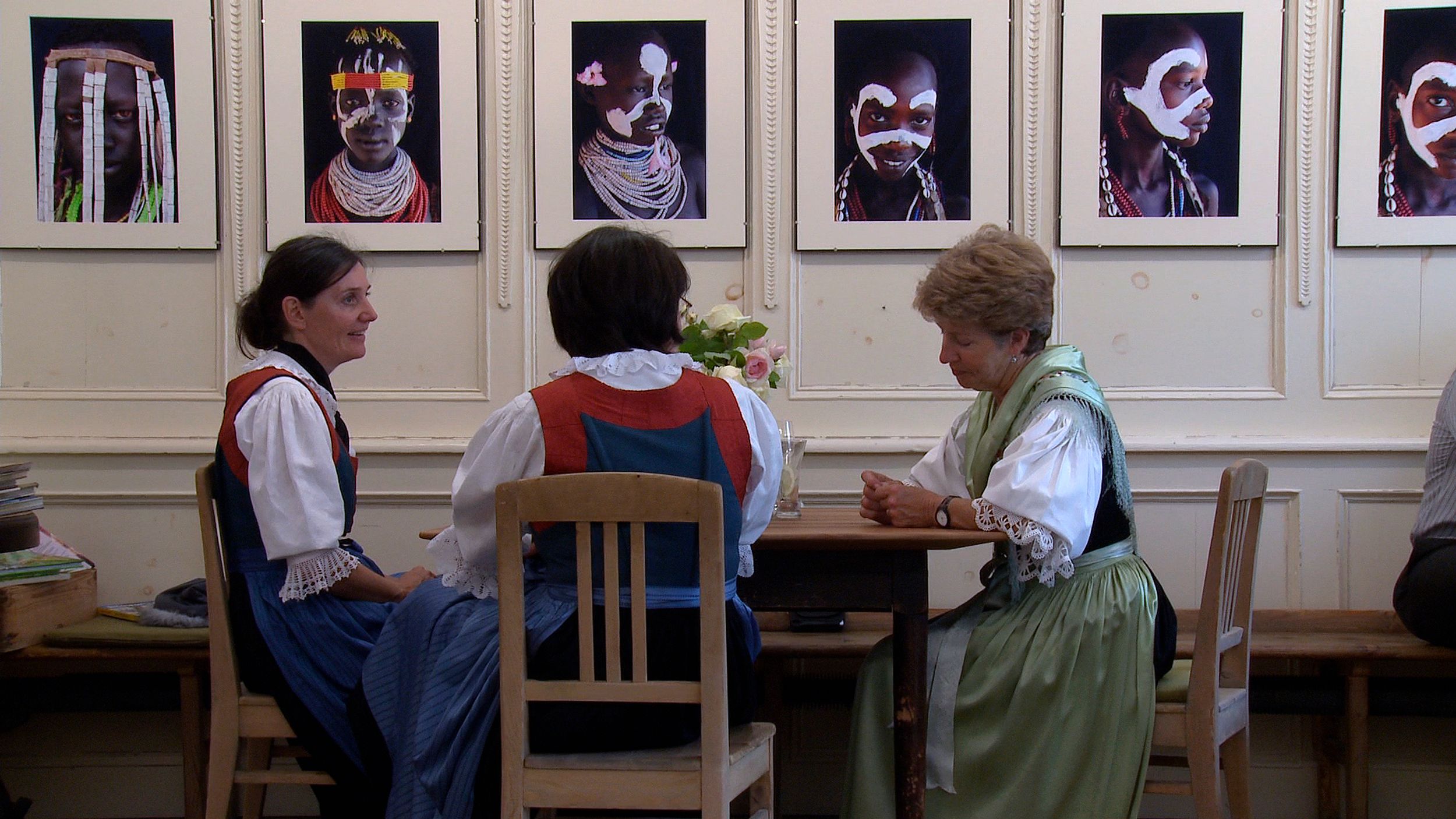
The Fabric of Home
takes stock of traditional Alpine clothing in southern Germany, Austria and Switzerland. The filmmakers attend a great number of feasts and festivals, including the 200th anniversary of Andreas Hofer's rebellion in Innsbruck, the 60th anniversary of the Carinthian Hunters' Association, and Oktoberfest in Munich. Everyone who appears in the film has his or her own reason to be wearing a (a traditional dress), lederhosen, or a (a traditional jacket for men): for some it's a political statement or a symbol of equality, while for others it might just be cool to wear. We see all sorts of people sporting these historical threads: farmers on the mountain slopes, but even Muslims and goths in the cities. Gay dance groups seem especially attracted to lederhosen, and a Jewish actor from Salzburg recounts the history of traditional Jewish dress during the Nazi period, explaining why this particular kind of pants represents his freedom. We also see how a long line of fashion designers, Vivienne Westwood included, have been inspired by this regional dress. As the memories of Nazi Germany fade, traditional clothing seems to be finding both its old and new meanings. As for the soundtrack, we get both old and new as well - from classical and traditional tunes to house.